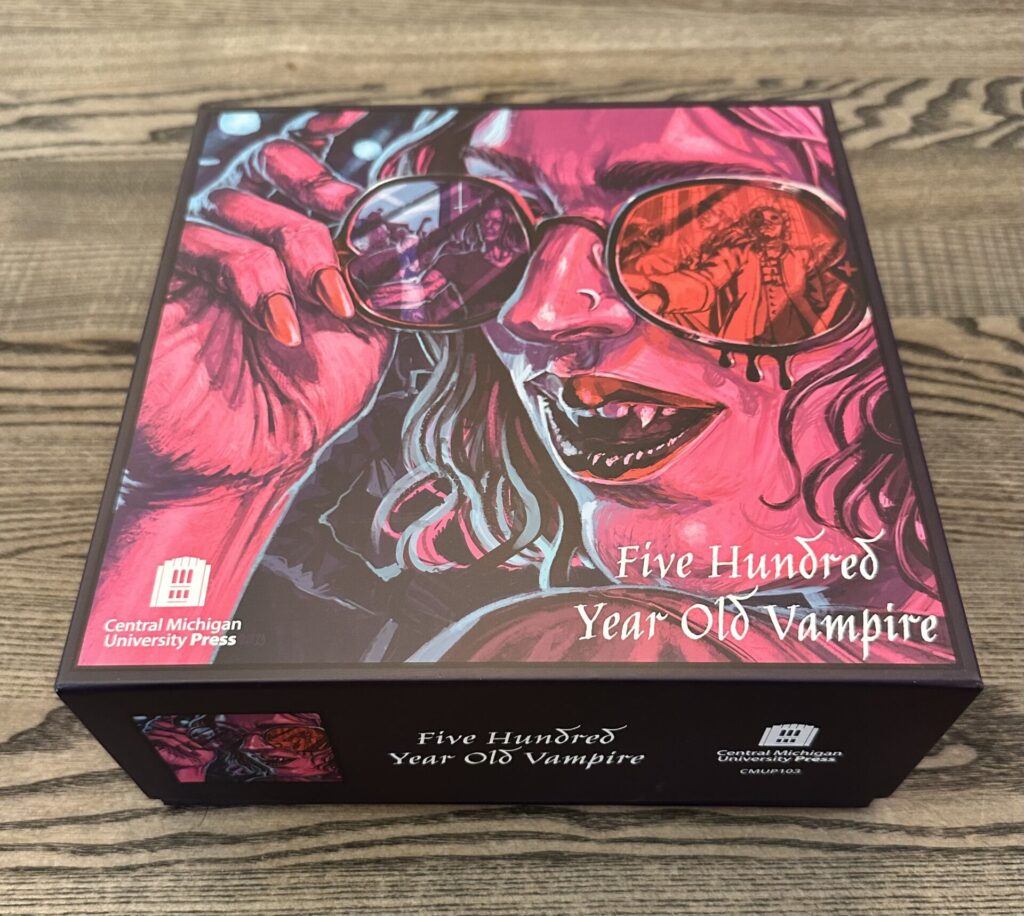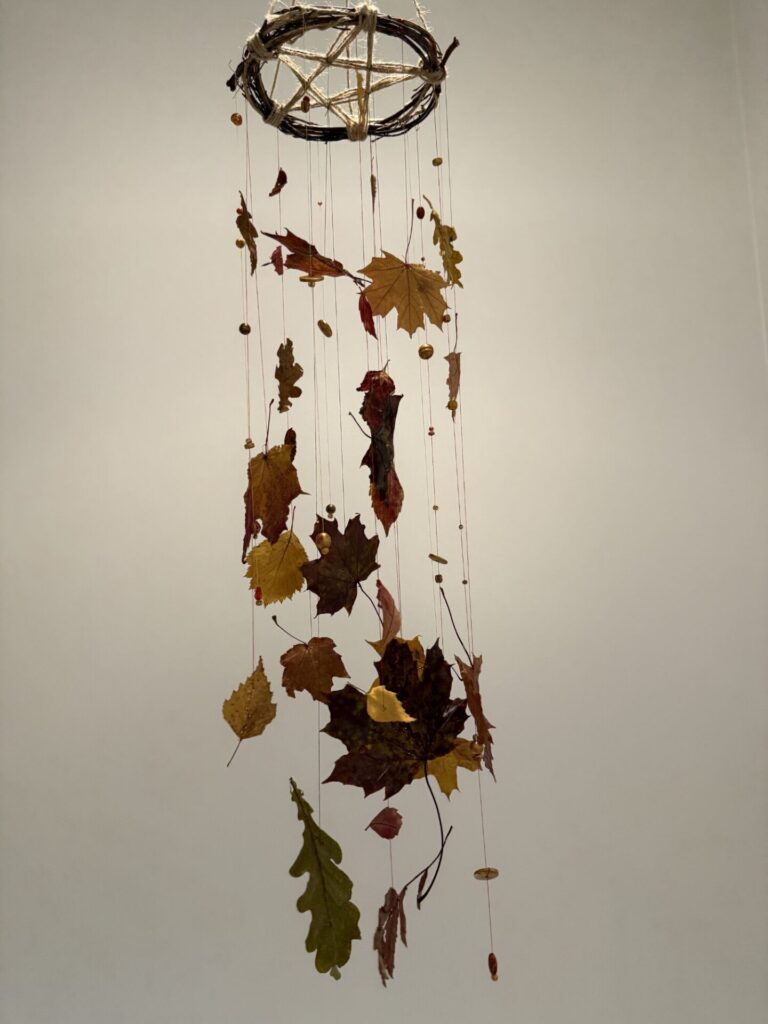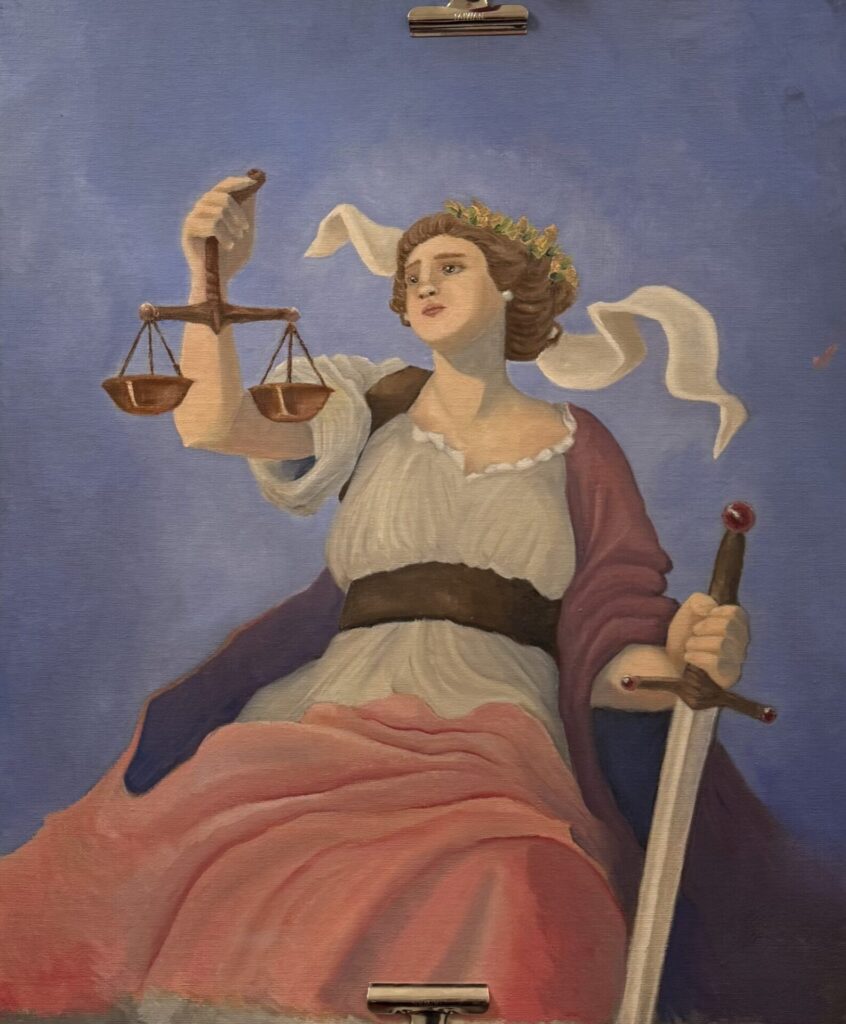We have started a game of Five Hundred Year Old Vampire. And not just any game: a three-party game with thirteen players. We’re on round three of ten and I’m already humbled, inspired, and in awe of what the players are creating. Even if we don’t make it to the end, this will have been an impressive undertaking.

If we do make it to the end with the majority of the players, we’re going to have more than one hundred artifacts – art pieces, really – and the plan is to have them exhibited to the public. The game is supposed to end in an exhibit of all the artifacts, and the way things are going, it’s going to be so impressive it’d be a shame to limit it to the players.
Five Hundred Year Old Vampire is a sibling game of Thousand Year Old Vampire. Thousand Year Old Vampire is one of the better known solo journaling games, where you chronicle your lone experience as a very old undead horror. Five Hundred Year Old Vampire takes that game’s core of using prompts to guide your journal writing, and makes it a group activity, while adding the creation of bespoke art on every turn.
How does it work?
Each turn of the game represents years and decades of time passing. The vampires manipulate each other by writing letters. The players create an artifact representing this phase of their vampire’s experience. Every turn, you create a memory (a written passage), a letter (to manipulate another vampire), and an artifact. In practice, many players write pages and pages of journal on the side, even though that isn’t required. At the beginning of the turn, you also research the time and place your vampires are in, and share your findings with the group. There is a recommendation to do this in a physical library. Doesn’t that sound nice?
All of this activity runs off a deck of prompt cards, split by the phases of a vampire’s existence, from neophyte to ancient. They sometimes include changes to your vampire’s resources or circumstances. You get to choose which ones to play, and which to give away, hoping the other players bite.

How does it work in practice?
For being such a simple design, the book does not do a great job in explaining how it works. I feel like the rules as written haven’t been playtested by anyone except their designer. We’ve been very confused by the practicality of play, and without group chats to coordinate during turns, I don’t know how we could make this work.
The prompt cards can be confusing. Many terms are not explained anywhere, and you have to do on the spot judgment to allow play to proceed. I don’t feel like the balance of resources and spending them has been tested. It feels off, just reading the cards, and feels worse in play.
The dice are not explained anywhere. They have some exceptions to standard symbols you might expect to find on a die, and their significance is unaddressed. I’m fine to interpret them at the table, but this does say “unfinished” to me.

Game driving creation
However: after a couple of full turns of the game, I don’t feel like these problems are really detrimental to the experience, as the focus is on creation, and the rules are merely a catalyst for that. What they do is create a barrier to entry that can stop you from progressing, if you allow them to become an issue.
I was skeptical whether the asynchronous pacing and limited interaction between players would allow for immersion and roleplaying to bloom, and am delighted to have been proven wrong! The players are really getting into it, and their stories are wildly different, even at this early stage.
The players are diving into the creativity. We’ve already seen composing of music, extracting dyes from plants, sewing of various types of clothes and accessories, printing, 3D printing, all manner of pens and paints, making rope out of yarn, and baking, to name a few, and I fully expect to see performance art and perhaps dance, at some point. Perhaps a play! The time constraints are very real, though, as we’re going for 2-3 week turns.
Something I loved to see is the players self-organizing to create a list of all the various tools, materials, and resources we have available as a group, so they can better share and be inspired by the various possibilities.
I can’t wait to see where this game goes. In the meantime, though, I am fast running out of space to store everything the players are creating!
Leave a Reply